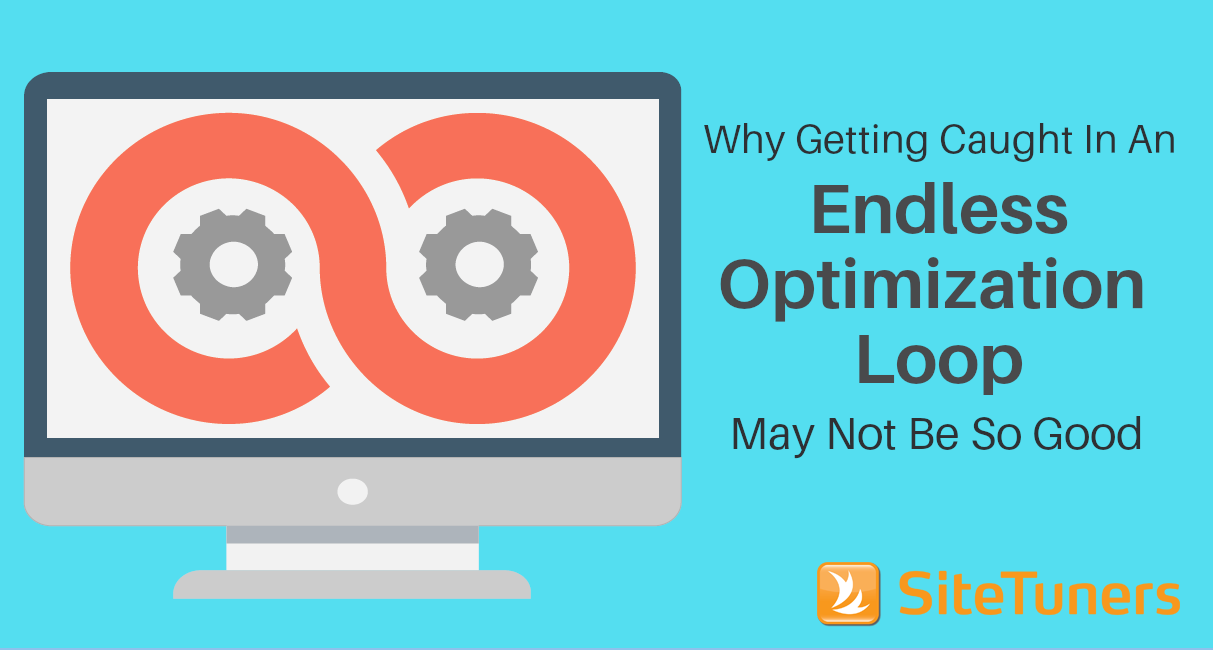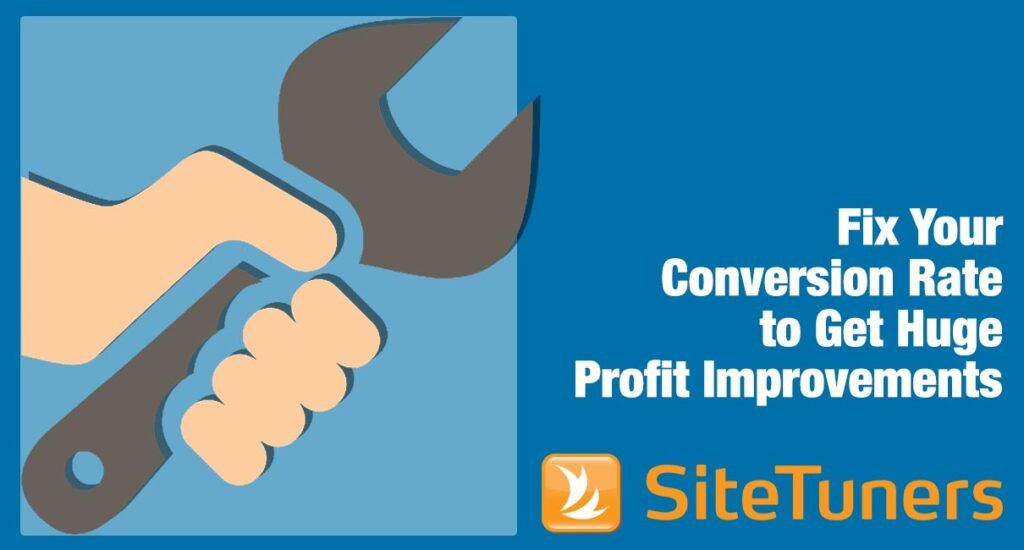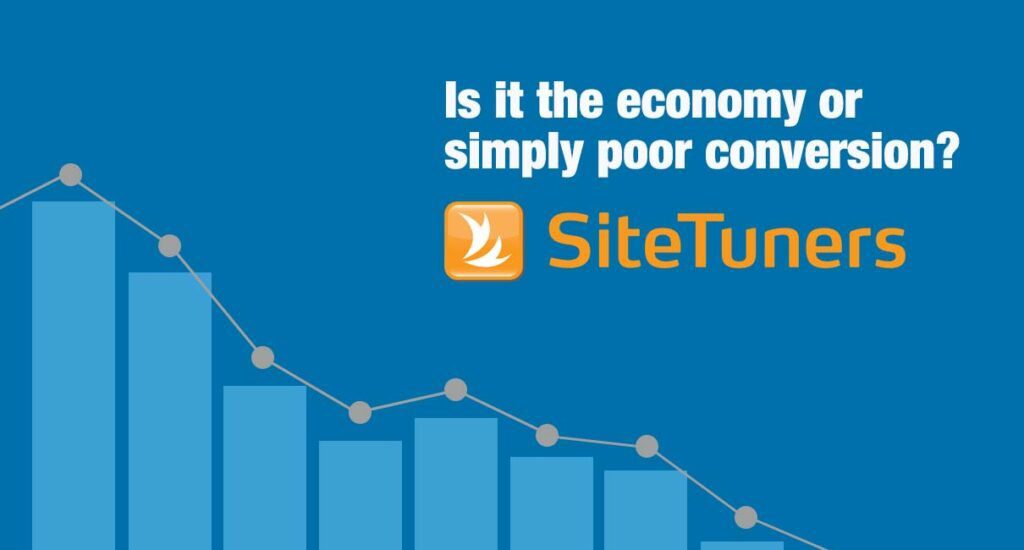In the world of online business, consistent optimization is a practical necessity. Competition is so fierce (and user expectations are rising so rapidly) that maintaining your current standard of service will still see you rapidly slip down the relative quality rankings. But there are limits to what you can do through the classic iterative loop, and it can even prove dangerous.
You might think that I chose the above image because it pictures someone seemingly at risk of becoming literally caught in a hoop, which is a loop of sorts — but no, that’s merely a neat coincidence. Instead, it’s a nod to two things: what can be accomplished through relentless routine improvement, and (more abstractly) how perilous that kind of polish can be.
But what kind of peril am I talking about? Well, in this piece, I’m going to lay out exactly why I think it’s so important to ensure that you don’t get stuck in an endless optimization loop, regardless of what you’re trying to improve. Let’s get straight to the reasons.
It can erode your objectivity
Despite what we may prefer to think, we’re not generally good at thinking outside of the box. In fact, we’re at our most productive when we operate inside set parameters, which is one reason why the optimization loop is very effective — get into the groove of making, testing and finalizing improvements and it become a lot easier to make progress.
The big issue with that is that it you inevitably gather assumptions and limitations along the way, and they consequently limit your future actions. One major assumption you can easily retain is that your previous optimization improvements are worthwhile, when you may only have evidence that they were worthwhile.
Imagine that you’re steadily trying to renovate a house to maximize its value, and you reach the point of having shored up every room — it’s time to return to the first room you overhauled and look for fresh opportunities. But when you look at that room, you find it hard to be objective about the adjustments you already made. After all, you made those changes, and changing those things again would make you feel that you’d erred with your first alterations.
If you can avoid an endless loop, you can finalize changes and then draw a line under them, knowing that you won’t be required to return to them in the near future to awkwardly critique your own work.
It sees diminishing returns
Elements of the online world such as UX most likely can’t be perfected — that much seems reasonable. No matter how good you make an interface, there will always be some miniscule way in which it can be improved (you can’t please everyone). But is that always going to be worth it? I contend otherwise.
Return to the renovation example and think about how dramatically you can change a shuttered and dilapidated property. With enough time, effort and investment, you can turn an unlivable disaster zone into a very comfortable home. But when you try to step up to a luxury living standard, the challenges become greater, the costs go up, and the results get less significant.
Spend a huge sum of money on upgrading all the materials, installing the plushest carpets and the latest technologies — it will be nicer, certainly, but the change won’t be awe-inspiring. Whether you’re improving a house, a website, or a customer journey, you’re going to see diminishing returns sooner or later.
Once you reach that stage, seeking further optimization is unlikely to be cost-effective. It may irk you to know that it could be better, but there are other things you can invest in — and when standards eventually shift to the extent that optimization once again becomes worthwhile, you can easily go back for another iteration of the loop.
It encourages the sunk cost fallacy
There are many reasons why gambling addicts find it so difficult to stop gambling, and one of them is the sunk cost fallacy — the belief that it’s always worth risking further loss to claw back a previous loss because you just can’t abandon something you’ve put so much into.
Well, getting deep into a frantic optimization loop can easily engender that kind of emotional and financial attachment. The more you improve the system, the more you’ll feel it’s worth, and the higher its perceived value becomes, the more you’ll want to improve it. In isolation, there isn’t anything terrible about that, but the real world places varied demands upon your time. You can’t afford to be spending all your time working on the same system or process.
Think about this from an operational standpoint in particular. There are probably companies out there that spent thousands of hours working to create seamless procedures for the manual dissemination of promotional emails, only to one day note the appearance of email automation providers — how reluctant do you suppose that made them to move with the times?
The digital world moves ever faster, with new products, processes and practices being pioneered on a daily basis. You’re often better served to move on to something new instead of trying to get more from what you already have.
The point of this piece is not to warn you against optimization, because optimization is almost always worth doing — if anything, the average business spends far too little time on polishing its systems and processes, and stands to benefit massively from some minor improvements.
All I’m saying is that you must not allow the pursuit of perfection to become an obsession. Consider each situation in isolation and value prospective improvements accordingly. That will keep you on the right track.
About the Author




